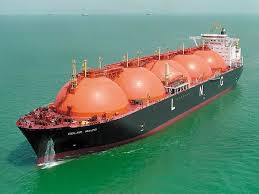
Energy advisory Douglas Westwood has report out titled “Australian LNG – A Lost Cause?”.
Recent news headlines on the liquefied natural gas (LNG) sector in Australia seem to be centered around its unsustainable rising costs. Woodside Petroleum had to ditch plans last year for its Browse LNG plant, which had gone way over budget at an estimated cost of $80 billion. In the interest of continuing the development, Woodside and its partners have now turned to floating LNG (FLNG) vessels as a practicable alternative. More recently, Santos and GDF Suez have also scrapped plans to build gas plants off the Northern Territory Coast of Australia. Projects that have gone ahead have seen significantly increased costs. At 80% completion, the Gorgon LNG project is now estimated to cost $54 billion – a sharp contrast to the original budget of $37 billion (46% over-budget).
In the meantime, despite Australia’s LNG cost challenges, the US is moving forward with the possibility of bringing onstream an LNG plant that would cost between $2.2 billion and $3.7 billion. Magnolia LNG in Louisiana is expected to come onstream in 2018, potentially the nation’s first LNG export plant with the capability of processing 8 million metric tons per annum. This shows the feasibility of constructing similar infrastructure at that price, but outside Australia!
Australia’s Woodside is, at the same time, looking to make a move overseas in search of better economics. The country stands to lose $97 billion of potential LNG projects to East Africa and North America unless radical cost reduction is applied. Furthermore, Russia and China’s $400 billion gas deal could possibly undermine several of Australia’s gas projects.
Australia has actively been finding ways of implementing reforms in an attempt to reduce operating costs. Even with the recent Russia-China deal, pipeline gas from Russia will only be supporting 6% of China’s gas demand by 2030. China cannot avoid seeking diversity in its energy sources. New technologies and innovations, such as the much-anticipated FLNG vessels, will present themselves as potential solutions. With these cost-reducing opportunities/ challenges, it proves to be interesting how the scenario will play out for Australia, new LNG producer entrants elsewhere and the potential for new gas pipeline suppliers to China.
Sadly, they’ve not responded to my request for the report so all we have is the presser. There’s nothing much new in that but I agree with it as far as it goes. Also, from LNGworldnews:
Several new producers are hoping to begin selling gas to Asia soon, including those in North America and East Africa, but with Russia entering this market in around 2018 at a competitive price, some may struggle.
“Sakhalin Energy is the closest LNG facility to Japan and Korea and all their exports are sold to Asia”, said Bernard Samuels, Commercial Vice President of Sakhalin Energy Investment Company. Samuels will be responding to the changes in LNG market and Sakhalin Energy’s current & future supply and developments at the Gas Asia Summit (GAS) later this year in October.
Through the shale gas revolution, North America has significantly increased its domestic natural gas production and is poised to start exporting LNG in 2015, a fact which would have seemed inconceivable a few years ago. The expansion of the Panama Canal will enable it to take conventional size LNG ships thereby providing easier access for Atlantic Basin cargoes to the higher priced LNG markets in the Far East.
“US LNG is one of the contributing factors to the emergence of new players as the potential for ‘cheap LNG’ means they may be able to undercut incumbent players,” said Nicholas Browne, Senior LNG Analyst, Wood Mackenzie Asia Pacific Pte Ltd.
Addressing supply routes and volumes of US gas trade to Asia, Browne will join North American gas & LNG industry players, including representatives from Cheniere Energy, Apache LNG, Bank of Tokyo-Mitsubishi UFJ and the US Department of State, on a panel discussion at the summit.
In Africa, major gas finds off the coasts of Mozambique and Tanzania have triggered hopes that LNG exports will earn billions of dollars for the impoverished region, but analysts now say there may be too many sellers for too few buyers.
Too many sellers. Get used to that phrase.

